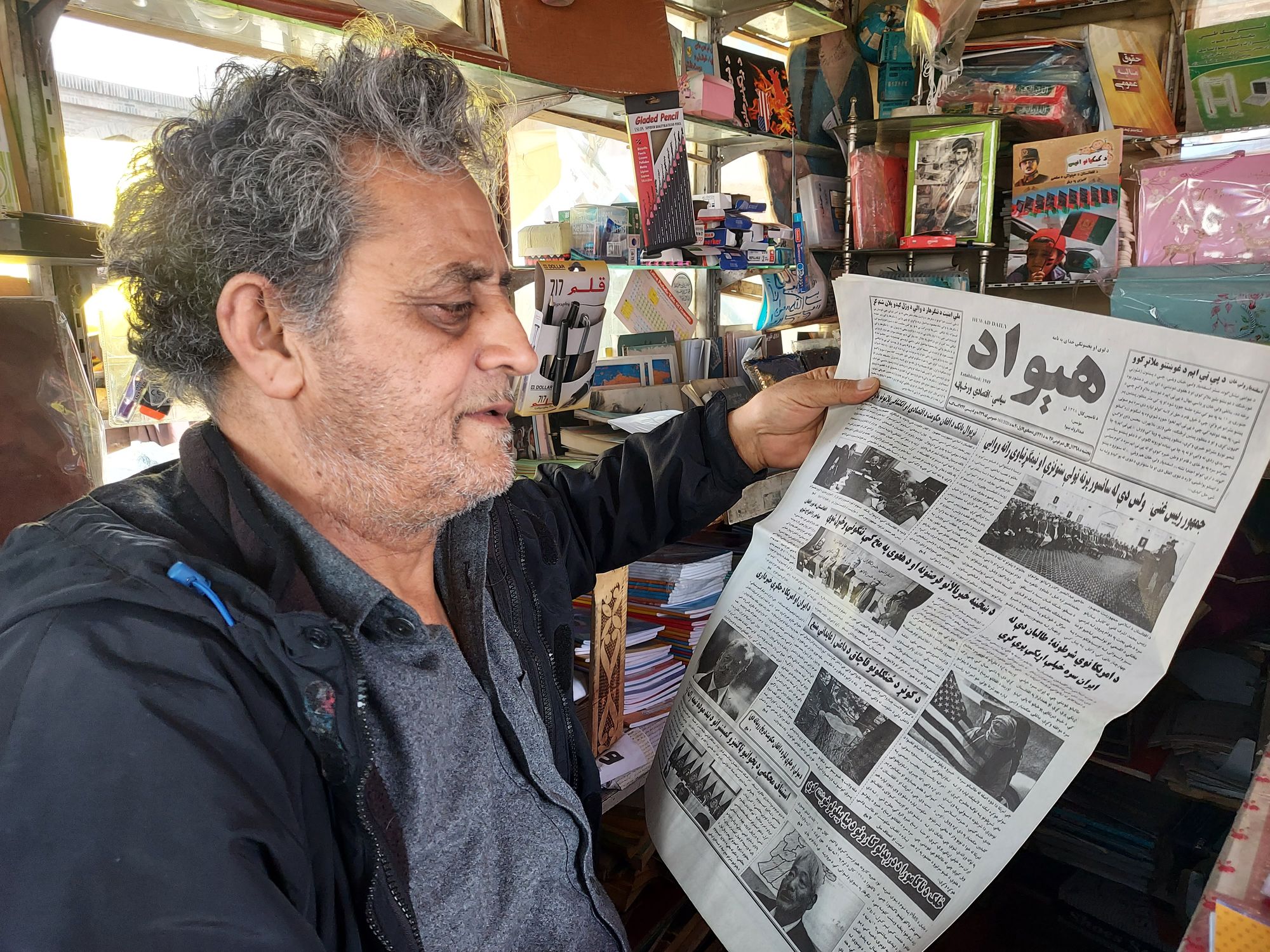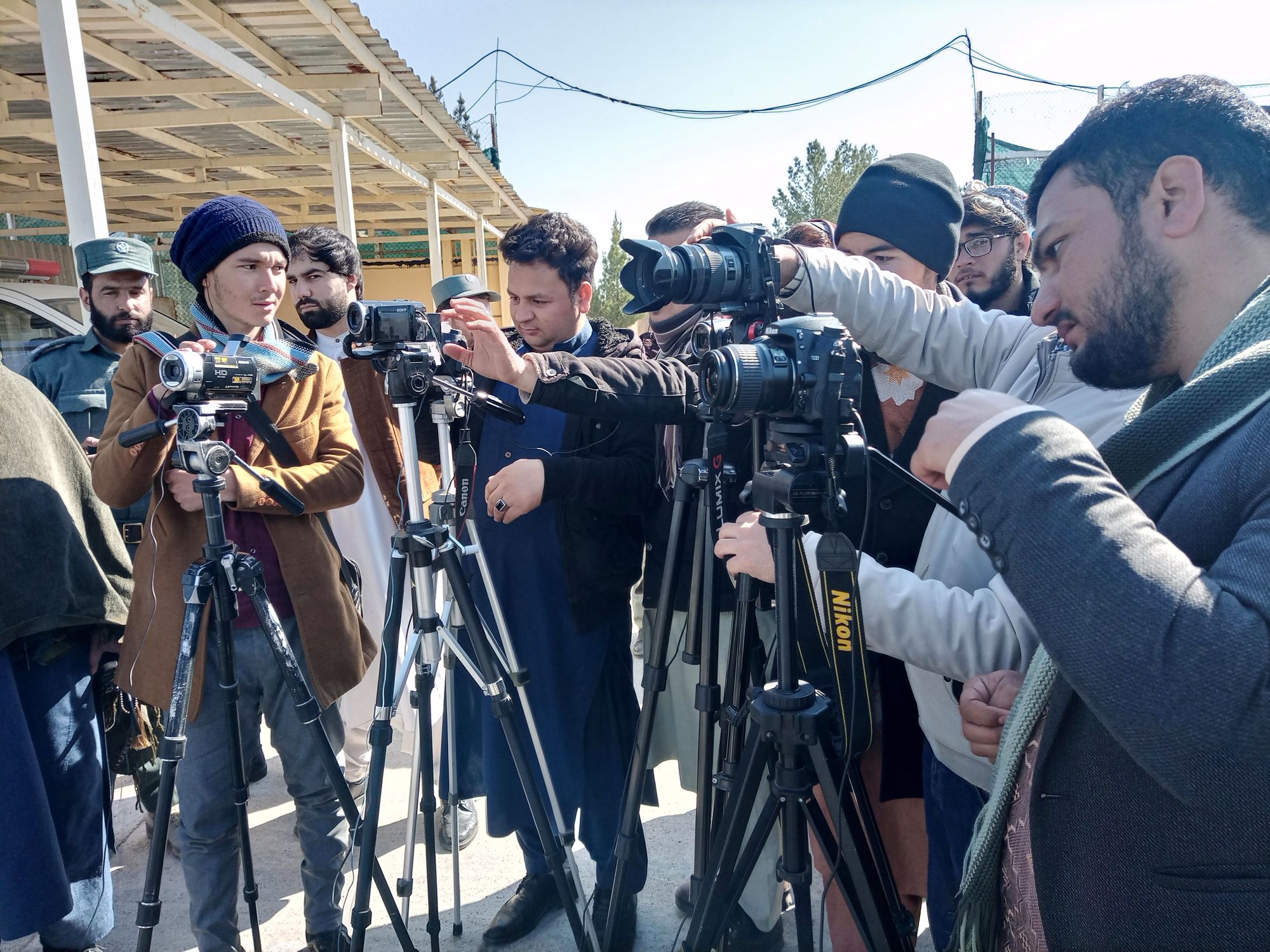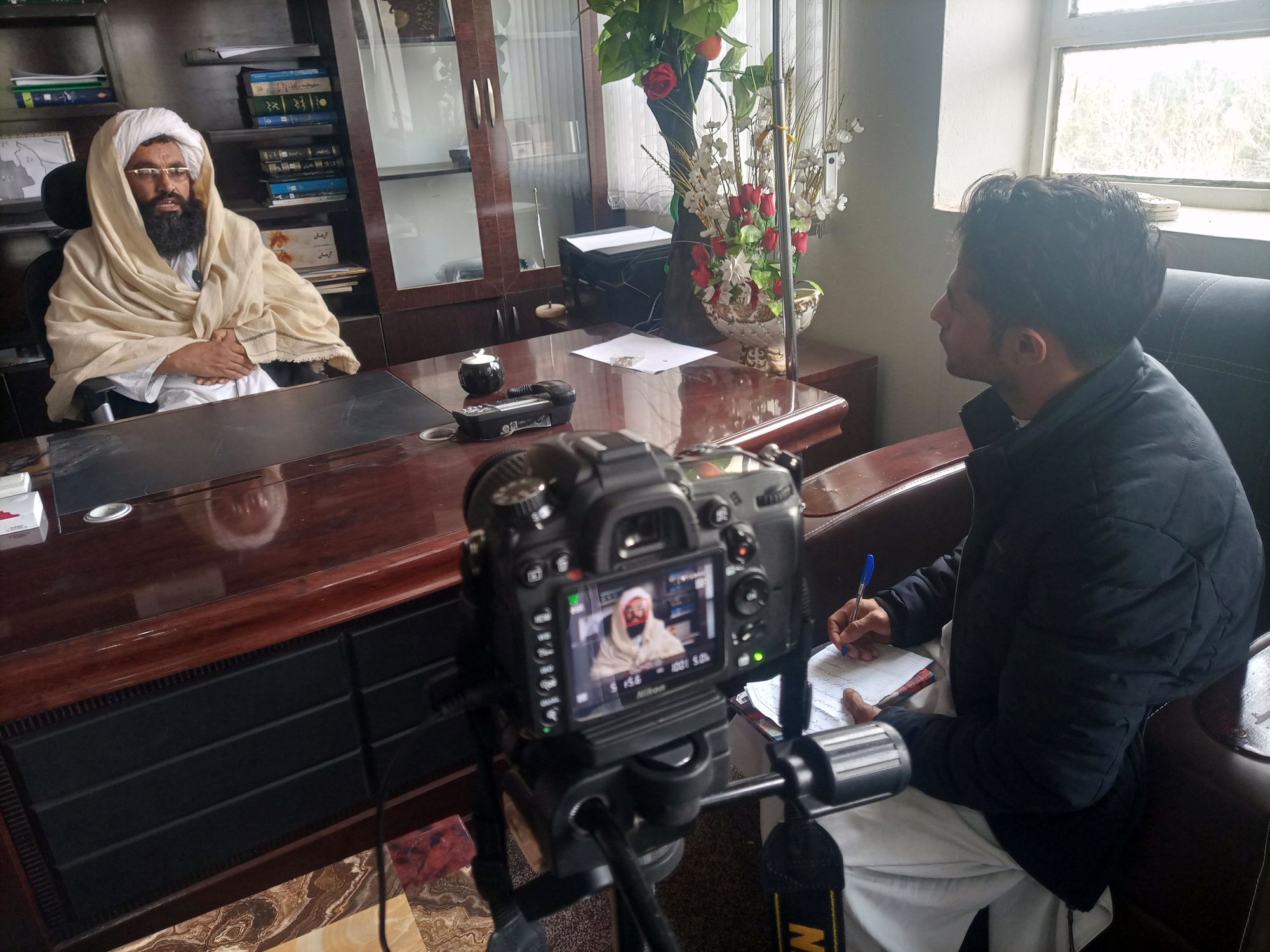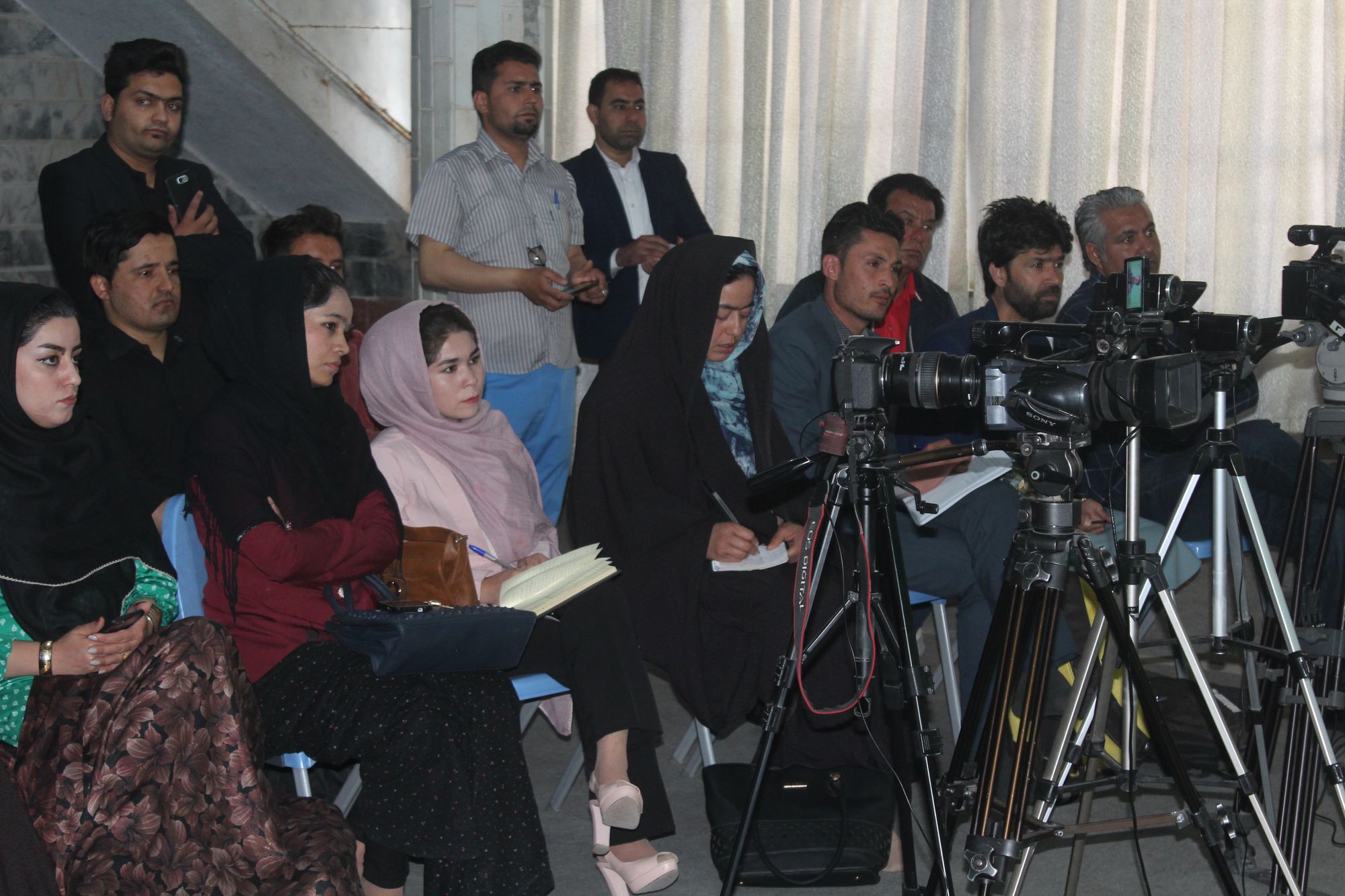Violence Against Journalists Double since Taliban Takeover

Reporting by Abdul Ahad Poya, Nazar Mohammad Razmal Zaman, Abdul Karim Azim, and Mirzahussain Sadid, Written by Mohammad Jawad Alizada, and edited by Brian J. Conley
KABUL – Cases of violence against journalists in Afghanistan have more than doubled since the Taliban victory last August, an annual report by Afghan media watchdogs published on Tuesday last week, said.
The Afghanistan Journalists Center (AFJC) and the Afghan Independent Journalists Association (AIJA) jointly said 66 cases of violence against journalist had been documented since August 15, a stark comparison to the number of cases - 33 - documented in the first five months of the year in which the previous Afghan government was ruling Afghanistan.
The cases include temporary arrests of journalists from one hour to several, and in some cases, up to a month, the report said, adding that most of these cases have included physical violence, abuse, intimidation and torture.
Just two days after the report was published, three journalists working with ToloNews, a leading news agency in Afghanistan, were arrested by the Taliban. The reason behind the arrests is not yet clear.
The United Nations Assistance Mission in Afghanistan (UNAMA) in a tweet said, “Deepening concern tonight in Afghanistan over credible reports of further arbitrary detentions by the Taliban of @Tolonews reporters. The UN urges the release of all those taken away by gunmen and an end to the intimidation and threats against journalists and independent media.”

Alive in Afghanistan’s correspondent Mirzahussain Sadid was arrested twice during the year, in the first case on September 7 of last year, Mr. Sadid was arrested while documenting a protest in support of the resistance in Panjshir province.
In another case on December 16, Mirza was held at a Taliban checkpoint in the western Kabul neighborhood while reporting on the distribution of humanitarian aid. Taliban fighters scanned his phone without his consent. After seeing images Mr. Sadid had taken as part of an investigative piece Alive in Afghanistan has been working on for months, with the explicit written permission of the Taliban, they hit him with the barrel of a weapon and kept him at the checkpoint for around an hour.
It's not clear in the report whether Mr. Sadid was one of the 3 cases of beating by the Taliban that was documented.

While the statistics of violence against journalists since the Taliban takeover have been high, the number of fatalities during the year has been significantly lower. Only 4 journalists were killed during the year while 11 journalists were killed during 1399 (19 March 2020 to 19 March 2021).
Afghanistan’s once vibrant media landscape has also been heavily impacted since the collapse as well. According to the report, hundreds of male and female journalists have left the country following the collapse.
The Committee to Protect Journalists (CPJ) in a report on March 2 wrote, “In every respect, Afghanistan’s once thriving media ecosystem is declining rapidly under Taliban rule.”
According to CPJ’s findings, “4,090 Afghan male journalists and 979 female journalists were active in Afghanistan. Six months later, an estimated 2,091 male journalists and 243 female journalists are still working in the country.”
The report by the watchdog also cites that 40 percent of media organizations (578), including radio, TV, web-based and print news agencies, have shut down due to economic reasons and restrictions to their work. Additionally 30 percent of media outlets are on the verge of closing, only operating intermittently for a few hours a day or week.

In addition to the unprecedented increase in threat and intimidation of journalists and media workers, access to information in the country has been severely restricted and journalists have been forced to self-censor.
Journalists wishing to cover events or incidents have been the target of repeated abuse by the Taliban. In one case last month, journalists were not allowed to cover the killing of a woman that sparked a protest by her family.
“Journalists in Kandahar wanted to document the reaction of the family of the dead woman, but we were mistreated by the Taliban and were not allowed to cover the protest. The Taliban also detained two journalists for four hours, confiscated their equipment and threatened them not to publish anything about the protest,” a journalist speaking on the condition of anonymity, told Alive in Afghanistan.
The woman was killed and two others were injured after Taliban security forces opened fire on their Rickshaw at a checkpoint in Kandahar city, the capital of Afghanistan’s southern province with the same name. The victims were out for grocery shopping in the Rickshaw that allegedly didn’t stop at the checkpoint.
The incident sparked outrage among the family members who carried her body from the Mirwais hospital to the governor’s palace, demanding justice.
Another journalist speaking on condition of anonymity said, “The Taliban have told us not to publish anything without their permission and refrain from publishing anything that points blame to the group.”
Journalists in Kandahar and the adjacent provinces of Helmand, Oruzgan and Zabul, as well as southwestern province of Nimroz, western Herat and the capital Kabul told Alive in Afghanistan that they had been called over by the Taliban, including their intelligence arm – General Directorate of Intelligence (GDI), and told to only publish articles that talks about their (Taliban) achievement. Journalists who have portrayed the Taliban negatively have been detained.
In Zabul, only 40 out of 112 journalists are working, with the rest either unemployed or working in other fields following the collapse of the western-backed Afghan government.

A female journalist in Oruzgan had to quit her job because the Taliban told her agency that women can no longer work in the media.
“Female journalists including myself are sitting at home unemployed,” the reporter said.
Every journalist Alive in Afghanistan spoke to talked about heavy restrictions in access to information, self-censorship, intimidation, and abuse. If the violence was not directed at them, it was directed at journalists they knew.
